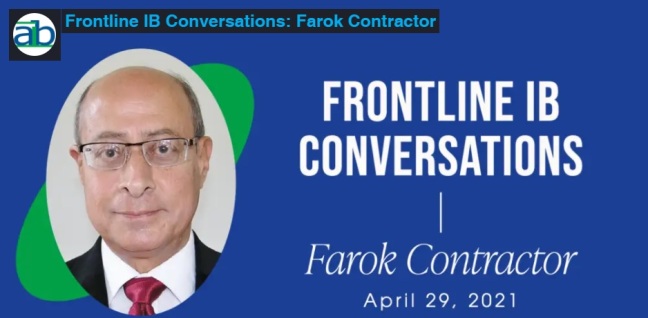© 2021, Farok J. Contractor, Distinguished Professor, Rutgers Business School, and Incoming President, AIB
Part of the Academy of International Business (AIB) Video Conversations with Leading Scholars Series
VIDEO LINK
Talk about 30 minutes
The Academy of International Business (AIB), of which I am serving as Incoming President 2021–2022, has been recording a series of 30-minute video conversations with leading scholars in the field. The conversations are a mix of the scholars’ personal backgrounds and their research interests. In my 30 minutes, I touch on some of my background growing up in India, particularly how the experience of working for the Tata Group (one of India’s largest conglomerates) sparked ideas for my subsequent doctoral studies at the Wharton School and my desire to pursue an academic career. During those years, research questions that were growing in strategic importance remain relevant for company practice today.
The conversation is in lay language and can be easily apprehended by any viewer. This and the other interviews in the series offer impressions of not just the leading edges of research in International Business topics, but also relevant policy issues that confront governments and economists in today’s globalized world.
Current and Ongoing Research Interests
Many of my remarks deal with research relevant to today’s technological era. For example:
- If an intellectual asset, such as a patent, a brand, or a proprietary technology, is to be sold or shared with another company, how do you calculate a “price” or amount to be charged?
- Assuming the “price” is € X million, by what combination of (a) up-front payment, (b) running royalties, (c) equity share (if a joint venture), and (d) profit margins (if there is an auxiliary supply chain agreement) should the target “price” be achieved? It turns out that the tradeoffs between the above channels of revenue are non-linear and non-zero-sum. Moreover, the mix of (a), (b), (c), and (d) induces different behaviors and risks on the part of the technology recipient partner.
- In a post-pandemic era with heightened perceptions of international supply chain risks, what shifts in the configuration of global supply chains or global value chains need to take place? What emergent technologies can reduce supply chain risks?
- If a multinational company wishes to invest abroad, how do they choose a country, looking across the regulatory and institutional climate in different nations? Which regulatory factors most powerfully influence foreign direct investment (FDI) choices made by multinational companies?
- From the point of view of governments seeking incoming FDI, what policies or issues attract investments, and which repel investors?
- Can a multinational company end up investing (FDI) in too many nations? Much evidence suggests that there are limits to international expansion. That is to say, over-expanding into too many nations (beyond an optimal point) is detrimental to global profitability. (What are the limits?)
